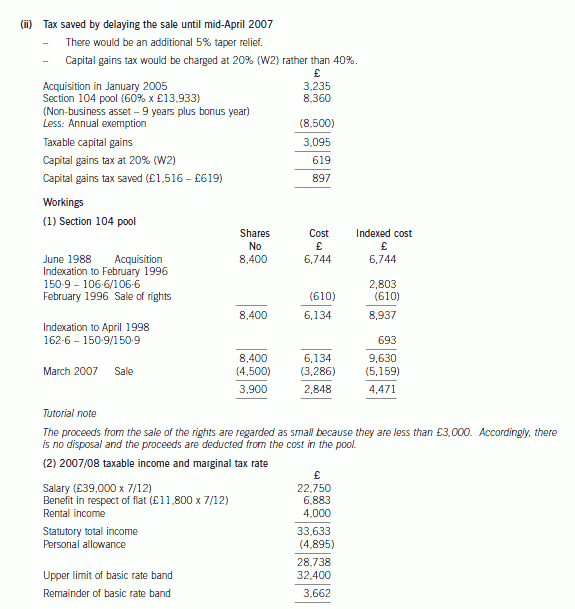要考ACCA的小伙伴看过来!ACCA的必考科目了解一下
发布时间:2020-03-07
ACCA课程一共15门,其中必考科目是11门,其余则为四选二的选修课。这些科目都是什么?我们今天来详细地介绍一下。
15门课程共分为两个阶段,分别是F阶段和P阶段,两个阶段主要分四个部分,第一部分为基础阶段,主要分为知识课程和技能课程两个部分。
知识课程主要涉及财务会计和管理会计方面的核心知识,也为接下去进行技能阶段的详细学习搭建了一个平台。知识课程的三个科目同时也是FIA方式注册学员所学习的FAB、FMA、FFA三个科目。
技能课程共有六门课程,广泛的涵盖了一名会计师所涉及的知识领域及必须掌握的技能。
其中又分为几个部分,F1-F3属于知识课程部分,F4-F9属于技能课程部分,SBL&SBR属于核心课程部分,P4-P7(选修两门)属于选修课程部分。下面来看一下这15门课程分别都包括哪些知识。
P阶段的课程主要分为核心课程和选修(四选二)课程。该阶段的课程相当于硕士阶段的课程难度,是对第一部分课程的引申和发展。该阶段课程引入了作为未来的高级会计师所必须的更高级的职业技能和知识技能。选修课程为从事高级管理咨询或顾问职业的学员,设计了解决更高级和更复杂的问题的技能。
ACCA考试的P阶段着重于企业战略管理中财务人员的作用,培养学员以专业知识对信息进行评估,并在专业伦理框架内提出合理的经营建议和忠告。选择性课程的引入,使学员能根据自身的工作性质选择课程,从而强化相关领域的知识。
核心课程具体如下:
战略商业领袖Strategic Business Leader SBR;战略商业报告Strategic
Business Reporting
选修课程:AFM高级财务管理Advanced Financial Management ;APM高级业绩管理Advanced
Performance Management ;ATX高级税务Advanced Taxation;AAA高级审计与认证业务Advanced Audit and Assurance .
具体课程中有2门核心课程是必须考试的,另外选修模块中选考两门,P阶段考试科目是专业的阶段课程,相对于前面二部分是有难度的,对综合应用英语的能力和专专业知识部分提出了新的挑战。
以上就是ACCA考试课程的介绍了,对于一个无任何考试科目免考的人来说,必须完成11门必考科目及两门选修课程才算是全科通过了ACCA,才有资格申请成为ACCA持证会员。
好了,如果还想了解更多信息,欢迎来51题库考试学习网留言哦!
下面小编为大家准备了 ACCA考试 的相关考题,供大家学习参考。
2 Which of the following are correct?
1. The balance sheet value of inventory should be as close as possible to net realisable value.
2. The valuation of finished goods inventory must include production overheads.
3. Production overheads included in valuing inventory should be calculated by reference to the company’s normal
level of production during the period.
4. In assessing net realisable value, inventory items must be considered separately, or in groups of similar items,
not by taking the inventory value as a whole.
A 1 and 2 only
B 3 and 4 only
C 1 and 3 only
D 2, 3 and 4
(ii) Advise Benny of the amount of tax he could save by delaying the sale of the shares by 30 days. For the
purposes of this part, you may assume that the benefit in respect of the furnished flat is £11,800 per
year. (3 marks)

(c) Calculate the theoretical ex rights price per share and the net funds to be raised by the rights issue, and
determine and discuss the likely effect of the proposed expansion on:
(i) the current share price of Merton plc;
(ii) the gearing of the company.
Assume that the price–earnings ratio of Merton plc remains unchanged at 12 times. (11 marks)
(c) Rights issue price = 2·45 x 0·8 = £1·96
Theoretical ex rights price = ((2 x 2·45) + (1 x 1·96))/3 = 6·86/3 = £2·29
New shares issued = 20m x 1/2 = 10 million
Funds raised = 1·96 x 10m = £19·6 million
After issue costs of £300,000 funds raised will be £19·3 million
Annual after-tax return generated by these funds = 19·3 x 0·09 = £1,737,000
New earnings of Merton plc = 1,737,000 + 4,500,000 = £6,237,000
New number of shares = 20m + 10m = 30 million
New earnings per share = 100 x 6,237,000/30,000,000 = 20·79 pence
New share price = 20·79 x 12 = £2·49
The weaknesses in this estimate are that the predicted return on investment of 9% may or may not be achieved: the priceearnings
ratio depends on the post investment share price, rather than the post investment share price depending on the
price-earnings ratio; the current earnings seem to be declining and this share price estimate assumes they remain constant;
in fact current earnings are likely to decline because the overdraft and annual interest are increasing but operating profit is
falling.
Expected gearing = 38/(60 + 19·3) = 47·9% compared to current gearing of 63%.
Including the overdraft, expected gearing = 46/(60 + 19·3) = 58% compared to 77%.
The gearing is predictably lower, but if the overdraft is included in the calculation the gearing of the company is still higher
than the sector average. The positive effect on financial risk could have a positive effect on the company’s share price, but
this is by no means certain.
声明:本文内容由互联网用户自发贡献自行上传,本网站不拥有所有权,未作人工编辑处理,也不承担相关法律责任。如果您发现有涉嫌版权的内容,欢迎发送邮件至:contact@51tk.com 进行举报,并提供相关证据,工作人员会在5个工作日内联系你,一经查实,本站将立刻删除涉嫌侵权内容。
- 2020-01-09
- 2020-02-22
- 2021-01-16
- 2020-01-09
- 2020-01-10
- 2020-01-08
- 2021-01-13
- 2020-02-27
- 2020-09-03
- 2021-01-13
- 2020-12-31
- 2020-02-27
- 2020-01-09
- 2020-01-10
- 2020-02-26
- 2020-02-28
- 2020-09-03
- 2020-09-03
- 2021-04-04
- 2021-01-13
- 2020-01-10
- 2020-01-09
- 2020-03-21
- 2020-01-08
- 2020-01-10
- 2020-01-09
- 2020-02-27
- 2021-01-13
- 2021-10-09
- 2020-01-09